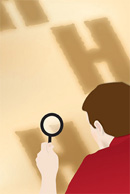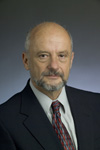|
Tuesday, Feb. 12
3:30 p.m.
DIRECTOR'S COFFEE BREAK - 2nd Flr X-Over
THERE WILL BE NO ACCELERATOR PHYSICS AND TECHNOLOGY SEMINAR TODAY
Wednesday, Feb. 13
3:30 p.m.
DIRECTOR'S COFFEE BREAK - 2nd Flr X-Over
4 p.m.
Fermilab Colloquium - One West
Speaker: G. Ambrosio, Fermilab
Title: LARP Long Quadrupole: A "Long" Step Toward an LHC Luminosity Upgrade with Nb3Sn Magnets
Click here for NALCAL,
a weekly calendar with links to additional information. |
Tuesday, Feb. 12
- Creamy turkey vegetable
- Chicken gyros
- Salisbury steaks w/mushroom au jus
- Chicken cacciatore
- Italian panini w/provolone
- Assorted slice pizza
- Super burrito
*Carb Restricted Alternative
Wilson Hall Cafe Menu |
|
Wednesday, Feb. 13
Lunch
- Sautéed salmon fillet w/watercress sauce
- Vegetable medley
- Apricot tart
Thursday, Feb. 14
Dinner
- Red pepper soup
- Steamed lobster tails w/mousseline sauce
- Asparagus w/lemon rind
- Sweetheart salad (beets, walnuts & bleu cheese)
- Lover's delight
Chez Leon Menu
Call x4598 to make your reservation. |
|
|
Entering Higgs habitat
A powerful new collider will allow scientists to explore the territory where the long-sought Higgs particle-maybe even a whole family of them-resides.
 |
| Illustration: Sandbox Studio |
They sound like Zen koans: The Higgs field bestows mass on other particles, but its own mass is unknown. It pervades the universe, but no one has seen its physical manifestation, the Higgs particle. It's the only missing piece of the Standard Model of particles and forces, but the model accounts for just four percent of the universe.
Less puzzlingly, but just as important, physicists think the Higgs field is responsible for giving mass to some particles but not others. It acts like a gooey, universe-sized bucket of molasses. As particles travel through the field, some interact with the molasses more strongly than others. Those that interact most become heaviest, while those that don't interact at all are left without mass. Without this fundamental phenomenon, the world would be a different place: heavy atoms wouldn't hold together; all elementary particles would be massless, zipping around at the speed of light; the reactions that stoke stars would go faster, slower, or not at all.
Discovering the Higgs particle and pinning down how much it weighs will ultimately make or break theories that explain, for example, the nature of the dark matter that makes up nearly a quarter of the universe.
After more than 20 years of searching, physicists think they will finally find this elusive particle at the Large Hadron Collider, now being set up in an underground tunnel near the Geneva, Switzerland, headquarters of CERN, the European particle physics lab.
Why is this omnipresent entity so hard to find? What makes the search different this time?
Read more
-- Heather Rock Woods
|
Eleventh annual URA Thesis Award Competition underway
Fermilab and the Universities Research Association invite submissions for the 11th annual URA Thesis Award Competition. The award recognizes the most outstanding thesis related to work conducted at Fermilab or in collaboration with Fermilab scientists. Work must have finished in the 2007 calendar year.
Nominations must be submitted to Richard Tesarek by March 1, 2008, and should include at least two letters supporting the
merits of the nominated thesis. The Ph.D. granting institution should provide at least one letter. The Thesis Awards Committee will make the selection. Judges will look for clarity of presentation, originality and physics content.
To qualify, the thesis must have been submitted as partial fulfillment of the Ph.D. requirements in the 2007 calendar year, be written in
English and it must have been submitted in electronic form to the Fermilab Publications Office in accordance with Fermilab policy.
|
Latest supercomputer calculations support the six-quark theory
From Brookhaven National Laboratory,
Feb. 8, 2008
A new calculation, reported in the January 25, 2008 issue of Physical Review Letters, confirms the six-quark theory of particle-anti-particle asymmetry. This is the first complete calculation of this phenomenon to employ a highly accurate description of the quarks that adds a fifth dimension beyond those of space and time.
This result allows recent experiments studying the decays of bottom quarks to be compared with earlier, strange quark experiments. This comparison agrees with the predictions of the Standard Model of particle physics and implies that the particle-anti-particle asymmetries (technically known as "CP-symmetry violation") seen in these two different decay processes have a common origin.
This research was carried by physicists from the U.S. Department of Energy's Brookhaven National Laboratory, Columbia University, the University of Connecticut, Edinburgh University, University of Southampton, and the RIKEN BNL Research Center (RBRC) using powerful, massively parallel supercomputers specially constructed to perform these calculations and capable of tens of trillions of arithmetic operations per second. The work was funded by the Particle Physics and Astronomy Research Council in the UK (now the Science & Technology Facilities Council), the RIKEN Laboratory in Japan, and the Office of High Energy Physics within the U.S. Department of Energy's Office of Science.
Read more
|
|
|
Laying foundations
 |
| Pier Oddone |
The recent actions in the United Kingdom and the United States to cut funding for ILC R&D has caused a reshaping of the ILC collaborative efforts across the world. Inevitably the development of the ILC is delayed. Remarkably, a new plan is already in place, adapted to the new reality. The director of the GDE, Barry Barish, presented this plan to P5 at Fermilab a week ago and yesterday to the ILC Steering Committee in DESY, Hamburg. ICFA responded positively. The plan relies on strong support in Asia for ILC R&D, the development of the XFEL in Europe, and the restoration of funding in the U.S. in the President's proposed FY09 budget. The plan has two phases. The first phase takes place between now and 2010 and focuses on critical R&D on accelerator issues and the study of cost reductions for the overall project. The second phase takes place between 2010 and 2012 and comprises the test of an ILC linac unit (three cryomodules, associated RF, operating with an electron beam), the completion of the technical design and the development of a project plan that includes a process for site selection.
The President's FY09 budget request contains $35M for the U.S. contribution to ILC R&D, consistent with the Administration's position that the U.S. should be at the table when the world discusses building the ILC. Jack Marburger, the President's Science Advisor, restated this position at the recent URA President's Council meeting. While the President's budget request makes a significant reduction over the previous funding trajectory for ILC R&D, it nevertheless allows the U.S. to make very significant contributions to the R&D effort. At Fermilab we are also fortunate to continue laying foundations to support this effort by making strong contributions to the development of the needed technology through our ILC R&D efforts and through the development of Project X.
|
|
Adobe Acrobat 7.0 Professional: Advanced - Feb. 28, 2008
Learn to convert technical documents to PDF files, enhance and control PDF content accessibility, customize PDF documents for interactive use only and prepare PDFs for commercial printing. Learn more and enroll
Kyuki-Do Martial Arts Class begins Feb. 25
Kyuki-Do, a martial art similar to Taekwondo, teaches a practical method of self-defense. You will learn balance, power, and grace. Six-week classes are held Monday and Wednesday from 5-6 p.m. at the Recreation Facility in the Village. You have a Recreation Facility membership and register through the Recreation Office.
Discounted tickets available
Discounted tickets are available for the following events: Chicago Bulls at the United Center, March 22, $26 and March 25, $30; Doodlebops, live at the Rosemont Theater, March 8; and "When Irish Cows Are Smiling" dinner and show at the Milk Pail, March 14, $35.
Folk Club barn dance Sunday, Feb. 17
The Fermilab Folk Club will host a barn dance on Sunday, Feb. 17, at 2 p.m. with music by Gena & Smith and calling by Lynn Garren. More information
Intermediate Word course Feb. 21
Learn how to create customized lists, tables, charts, graphics and personalized Word 2003 efficiency tools at an Intermediate Word 2003 course on Feb. 21. Learn more and enroll
Scottish country dance Tuesday
Scottish country dancing will meet today, Feb. 5, at Kuhn Barn. Instruction begins at 7:30 p.m., and newcomers always are welcome. Most dances are fully taught and walked through, and you do not need to come with a partner. Call (630) 840-8194 or (630) 584-0825 or e-mail for more information.
Additional Activities |
|